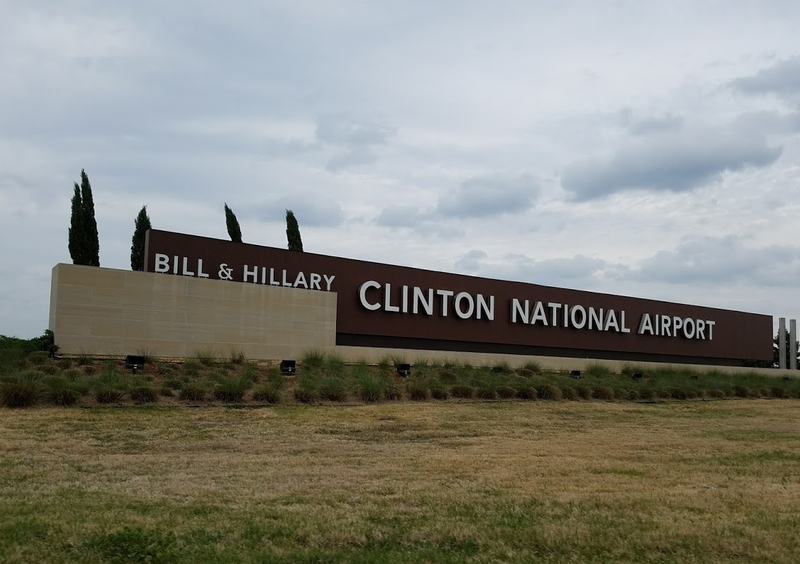The first phase of an estimated $60 million project to reconfigure the taxiway system at the state's largest airport to make it safer and conform with modern standards will cost at least $12 million.
Even the first phase of the project "Taxiway Charlie Phase I" has been designed with separate stages that would allow the cost of the full project to grow to $21 million if additional federal aid becomes available to Bill and Hillary Clinton National Airport/Adams Field, airport officials said Tuesday.
"We're going to end up with a safer taxiway and runway system after all this," said Bryan Malinowski, the airport's executive director.
The centerpiece of the project is the relocation and extension of Taxiway Charlie, which generally runs parallel to Runway 4L-22R, which is one of the two main commercial service runways at Clinton National.
The relocation of Taxiway Charlie will allow the airport to eliminate several nonstandard taxiway-runway intersections, which are high-speed taxiways angled to allow arriving aircraft to quickly exit the runway to make way for other arrivals. Federal Aviation Administration regulations now require those intersections to be perpendicular, much like a standard vehicle intersection, for safety.
The initial stage includes construction of Taxiway Charlie in the new parallel taxiway configuration, construction of connections to Taxiways Delta and Papa, and construction of a new connection to Runway 4L-22R called Taxiway C4.
The work also includes associated utility relocations, airfield lighting, and drainage and sign improvements. New signs will be provided to designate the name change for the taxiway north of Taxiway Papa from Taxiway Charlie to Taxiway November, according to airport documents.
Tom Clarke, the airport's deputy executive director, said that at the request of the FAA, the airport prepared additional stages to Phase I in case more grant money becomes available. Typically, some airports return unused grant money that then can be redistributed for projects ready for construction.
"We have our fingers crossed, but there are no guarantees," he said.
Airport officials added three stages.
The first additional stage includes building a connecting taxiway from Runway 4L-22R to Taxiway Foxtrot and the demolition of Taxiway Golf along with associated airfield lighting, grading, drainage and sign improvements.
The second additional stage includes construction of a taxiway from Runway 4L-22R to Taxiway Charlie, the demolition of Taxiway Bravo between the runway and Taxiway Papa along with the necessary ancillary work.
The final stage would be construction of a taxiway from Runway 4L-22R to Taxiway Foxtrot and the demolition of Taxiway Papa from the runway to Taxiway Foxtrot.
The Little Rock Municipal Airport Commission's lease and consultant selection committee Tuesday recommended awarding the contract for the project to Weaver Bailey Contractors Inc. of El Paso. Its separate bids for each stage of Phase I of the work were lower than the bids submitted by two other firms.
The bids from Interstate Highway Construction of Mansfield, Texas, ranged from $14.7 million for the initial stage to $22.9 million for all of the stages. The respective bids from Emery Sapps & Sons of Columbia, Mo., were $14.5 million and $23.5 million.
Future projects also include eliminating easy access to two runways at a point where they almost come together on the west side of the airport. At that point, aircraft could inadvertently take off from either Runway 4L-22R or Runway 18-36, a "hot spot" that the FAA said has "a history of potential risk of collision or runway incursion."
At least two incidents in which an aircraft on the ground has encroached upon Runway 4L-22R while another aircraft -- in both instances an airliner -- had been cleared to land on the runway and had to initiate a "go-around" and abort the landing have been documented since 2012.
The work is being done in stages to minimize disruption to aircraft ground traffic, which has been disrupted by other construction projects on the airfield, including a $6.9 million project to rebuild a section of Taxiway Papa running on the west side of the Dassault Falcon Jet complex.

